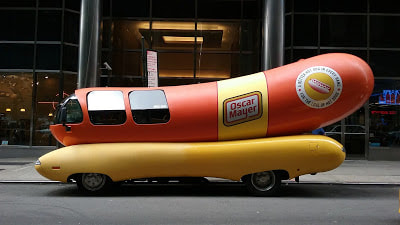|
Down the road from my house, the luncheon meat smell has faded from Madison’s former Oscar Mayer plant. Armour and Swift were big names in Chicago, where I lived years ago. Meat packers spurred the growth of Milwaukee and gave Green Bay’s football team its name. To me, spikes of coronavirus in meat processing plants feel up close and personal.
Railroads used to carry livestock from the land-rich West to Chicago, Carl Sandburg’s “Hog Butcher for the World.” At the Union Stock Yards, immigrants from eastern Europe cut and packed pork and beef to ship east in refrigerated railroad cars. Upton Sinclair’s bestseller The Jungle (1906) exposed the horrors of Chicago’s assembly-line slaughterhouses. Public outcry led to the Meat Inspection Act and the Pure Food and Drug Act, but no change in worker conditions. Union organizing in the 1930s boosted wages and worker safety. For almost half a century, packing plants offered decent manufacturing jobs. However, refrigerated trucks freed the companies from a need to locate near railroad lines. Chicago’s stock yards closed in 1971. Dispersed rural sites allowed for lower pay and less union influence. To supplement local labor, employers recruited documented and undocumented immigrants. Wages plummeted. Rapid, repetitive, shoulder-to-shoulder work with sharp instruments was dangerous even in better times. For a perfect storm, add a virus that thrives in cool, damp, noisy spaces and threatens anyone less than six feet away. The only way to produce as much meat as Americans want is to endanger the workers who process it.
7 Comments
Not sure what is more disturbing, the dangerous conditions for the meat packing workers or the fact that despite publicity it has gone on for more than 100 years. Do we really need meat three meals a day in the US? On a lighter note, I like the photo of the wienermobile. Cheers me up to see it around town, although it reminds me of all those good jobs our community lost....
Reply
7/20/2020 10:21:36 am
I remember in school learning what an impact *The Jungle* had, but no one mentioned how disappointed Upton Sinclair was that all the resulting improvements were for the consumer and none for the workers. And I recall some authority recently being quoted that a particular outbreak was mostly just among the packing plant employees, not "regular people in the community." So many being Latin American unfortunately contributes to a sense that "it doesn't really affect us."
Reply
7/20/2020 10:33:17 am
Red meat consumption is down but poultry is up. Even a diet that emphasizes fresh fruits and vegetables is relatively expensive. Are we prepared to pay what food would cost if it didn't depend on low-wage farm or factory labor, and to make sure all Americans earn enough to afford food at those higher prices?
Reply
Diane
7/20/2020 11:35:09 am
Good questions. 7/20/2020 04:48:36 pm
Diane, rice and beans are a good combination for nutritious food at modest cost. Do you know if these crops depend on low-paid seasonal labor? If so, even though workers work outdoors, living quarters would make social distancing hard. Also, rice grown in flooded fields has environmental impacts: (pro) wildlife habitat, (con) methane emissions, and (con) potential water shortage. It gets complicated.
Reply
4/11/2021 08:24:04 am
Basically this sarahgibbardcook blog has been sharing us more updates on moving topics and developing the services as well. Thanks for sharing us more packing updates with us.
Reply
Leave a Reply. |
AuthorI'm a historian who writes novels and literary nonfiction. My home base is Madison, Wisconsin. Archives
July 2024
|

 RSS Feed
RSS Feed